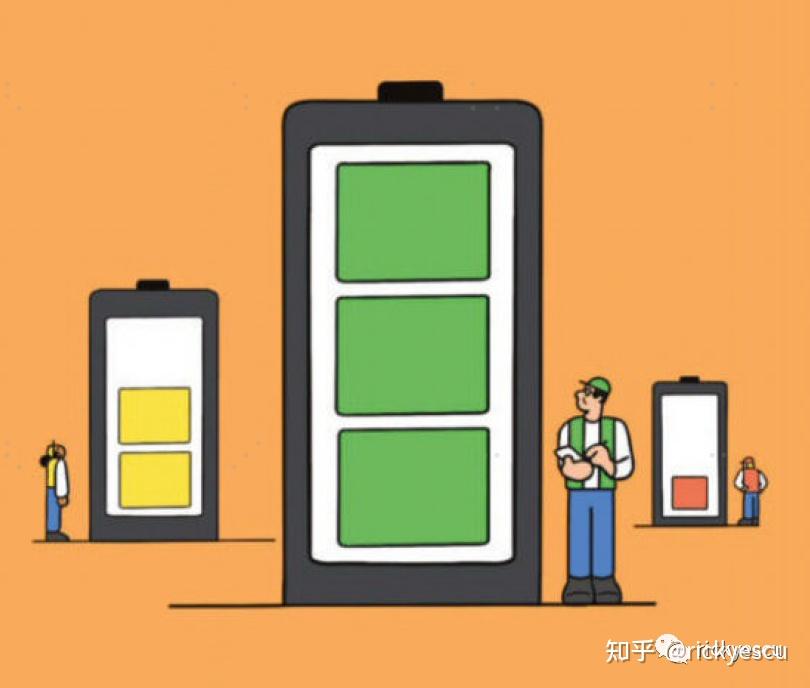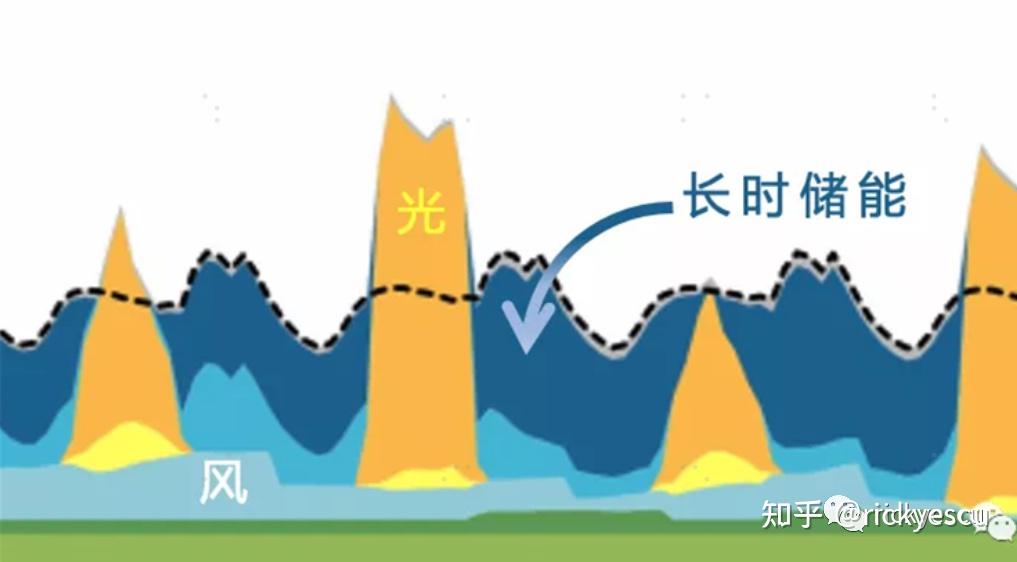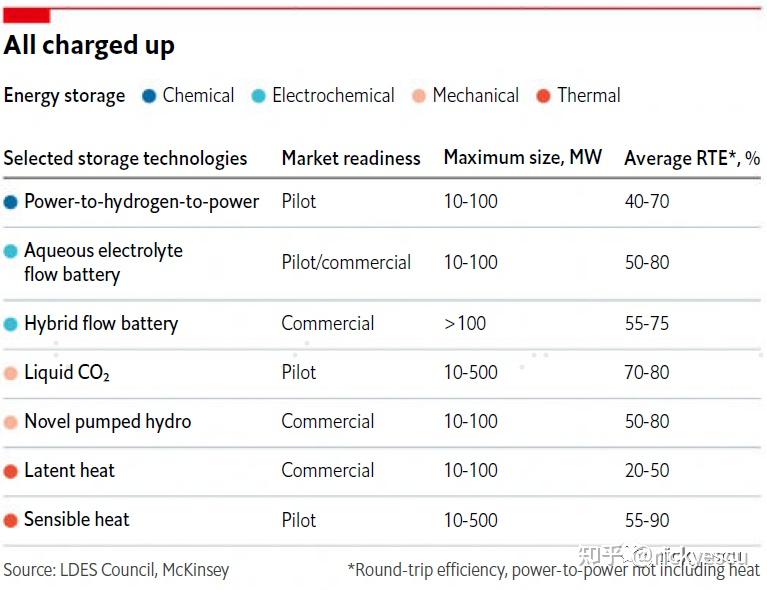|
|

这一期的科技季刊内容让我大开眼界,粗粗读了一遍之后,觉得增加了不少新能源方面的知识。我想这是我们学英语的最有意义的回报之一吧。
为了更好的掌握这些概念和相应的词汇,为了以后遇到这些话题的文章能更快速的把握内容,不妨做一下精读。
<hr/>Energy Storage
Beyond batteries
The deep decarbonisation of grids heavily reliant on renewables
requires long-duration energy storage
- 电网的深度脱碳极大程度上依赖于可再生能源,而一个深度依赖于可再生能源的电网又需要“长时储能(long-duration engery storage,缩写成LDES)”技术(以抵消可再生能源间断性强的弱点)。
Most climate action centres on getting rid of carbon dioxide. Energy Dome, an Italian startup, wants to put it to use. Its “CO2 batteries” will store the gas under high pressure when electricity is plentiful; when electricity is needed the stored gas will be run through a turbine to generate some. The advantage of using CO2 is that it can take on a dense sort-of-liquid form at room temperature; similar systems using other gases need low temperatures. The company has built a pilot plant in Sardinia and is moving up to a commercial scale. “I dream that our domes will become an icon of the energy transition,” says Claudio Spadacini, its charismatic boss, “like windmills and solar panels.”
- 本篇文章主要探讨能源存储方式。
- 因为在将来的电网里面,会有大量的可再生能源接入作为能量源。
- 可再生能源的特点之一就是不靠谱(intermittent,间断的),风不知道什么时候不吹,太阳不知道什么时候被乌云挡住,而且它老人家最多也只上半天班。
- 有一个很自然的解决方法就是储能,在风比较大的时候,在白天太阳光足的时候多发些电,存起来,然后在需要用电的时候再释放(或者转换)出来。
- 怎么存?可以用电池直接存储电能;也可能通过能量转换把电能转换成其他形式的能量,当需要使用的时候再转换回来。虽然这样的两次转换会产生浪费,但是考虑到可再生能源都来自于太阳那个巨无霸生生不息(风能也是来自于太阳),浪费一点也没关系。
- 本篇文章从二氧化碳(CO2)储能方式开始入题。
- 二氧化碳电池:
- 在能量富余的时候,把二氧化碳气体加以高压转换成液体形式存储起来;
- 在需要用电的时候,把液化二氧化碳减压变成气体推动涡轮(turbine)发电。
- 使用二氧化碳的原因是其在常温下(施以一定压力)就可以转换成准液体(sort-of-liquid form)。而其他气体则需要比较低的温度(需要耗能)。
- 后面我们会知道这属于一种机械储能方式,因为二氧化碳在能量储存和转化的过程中只发生了物理状态的变化。
- 这个技术目前意大利初创企业(startup)Energy Dome做得不错
- 它们在撒丁岛(Sardinia)上有实验工厂(pilot plant),很快进入商业规模(commercial scale)
- 这个公司用来存储液化CO2的罐子应该是半球顶(domes)
- 公司富有个人魅力的老板Spadacini说希望这种半球顶像风车(windmill)或者太阳能电池板(solar panel)那样,成为全球能源转型大潮中标志性的形象(icon)。
<hr/>Energy Dome is one of a promising crop of firms seeking to upend the field of long-duration energy storage, or LDES. Such technologies, which can provide large amounts of electricity for hours, days or weeks when called on, are important complements to intermittent renewables—especially in systems which aim to do without any fossil-fuel or nuclear power stations. “LDES allows you to go from 60-70% renewables on the grid to 100%,” says Godart van Gendt of McKinsey, who works in the field.
- crop of sth group of people or quantity of things appearing or produced at the same time (同时出现或产生的)一群(人), 一批(事物): this year&#39;s crop of students 本届大学生 * The programme brought quite a crop of complaints from viewers. 该节目招致观众诸多不满.
- upend: 颠倒,颠覆式创新。
- LDES,long-duration enegy storage,长时储能。
- 能存储可供长时间(数小时,数天甚至数周)使用(从而也是很大容量和功率)的电能,从而在电网需要的时候召之即来,是喜欢发羊癫疯抽搐式表现的可再生能源的重要互补(complement)。
- 如果你让电网从目前60-70%的比例前进到100%完全使用可再生能源,长时储能是必备良药。
- McKinsey,麦肯锡咨询公司。
<hr/>But you need a lot of it. Storage systems are measured in two linked but distinct ways: the power they can deliver (expressed in a multiple of watts), and the amount of energy they can store (expressed in a multiple of watt-hours). To understand the difference, think of the simple technology which provides almost all the world’s LDES needs: pumped storage hydropower (PSH). When electricity is cheap and copious, water is pumped up into a high-level reservoir. When electricity is scarce the water is allowed to run back down to a lower level, spinning a turbine as it does so.
- 但是你需要很多很多的LEDS/长时储能(才能实现这个完全可再生能源电网)。
- 储能系统有两个指标,一个是功率(以瓦为单位),一个是能量(以瓦时为单位,一千瓦时就是我们经常说的一度电的“度”)。
- 本段介绍第二个长时储能技术,也是世界上目前使用最多的技术:抽水蓄能水电/PSH (pumped storage hydropower)。
- 能源富余(copious)时,用水泵(pump)把水抽到一个位置较高的水库里;
- 需要用电时,放水推动涡轮发电(就跟一个正常的水库一样),把水排到一个位置较低的水库里。
- 这其实就是一个水循环使用的人造水库。
<hr/>The power rating of the system is set by the size of the turbine and the difference in water levels between top and bottom; for the world’s PSH systems the total number is about 165GW. The energy-storage capacity is set by the amount of water you can get into the top reservoir in the first place. For today’s PSH systems that figure is around 9,000GWHrs, or 9TWHrs.
- PSH系统的功率值由涡轮发动机的数量,以及两个水库海拔高低的差异来决定。
- 全世界目前PSH系统总的发电功率有165GW(G:10的9次方)
- 能量值由你抽到高位置水库的水量来决定。
- PSH总能量值是9TWHrs(T:10的12次方),即9×10^9度电,也就是90亿度电。
<hr/>In a report for the LDES Council, an industry body, Mr Van Gendt and colleagues modelled the most cost-effective path to a world with netzero emissions by 2040. They found that the system needed to be able to deliver 1.5-2.5TW and store 85-140TWHrs. To put that in context, America’s total electricity-generating capacity today is about 1.1TW; 140TWHrs is about 5% of the EU’s annual electricity consumption. Huge numbers—but achievable with sufficient investment, the report argued.
- 如果到2040年要实现零排放,那么LDES系统要能够以1.5-2.5TW的功率释放能量,储能要到85-140TWHrs。
- 对比上面的PSH系统的两个现有数据0.165TW和9TWHrs,刚好都是10倍左右的增长(在20年内完成)。
- 美国的总电能功率是1.1TW,
- 欧盟的每年耗电量是140TWHrs的20倍(5%的倒数)。
- 所以这两个数字(1.5-2.5TW的功率和85-140TWHrs的能量)都是巨大的数字,但麦肯锡提交给长时储能委员会(LDES Coucil)报告说,只要投入够,能搞定。
<hr/>Indeed, if everything could be done with pumped hydro, this might look quite promising, given the exponential growth that has often been seen in the technologies elsewhere in the energy transition. Global wind capacity has increased by a factor of four in the decade to 2020; solar capacity increased nearly 18-fold over the same period. That makes increasing PSH capacity by a similar amount in a couple of decades sound quite reasonable.
- 如果啥都能用抽水蓄能水电解决,那看起来似乎确实可行。
- 因为能源转型中新的技术的增长通常都达到了指数级:
- 风能在2020年前的十年中增长了4倍
- 太阳能则在这十年中增长了18倍!
<hr/>In practice, though, things are trickier. Wind and solar benefit from the increasing returns of mass-production and started off at a very low base; PSH systems are one-offs and many have already been built. The best sites for it have often already been taken; the best remaining sites are often far from where people need power. Project-development times for PSH are long, capital costs are high and local environmental objections common. The industry thinks it is on track for a 50% increase in capacity in the next decade. But a ten-fold increase in two decades looks implausible.
- 但实际上,问题有点复杂(tricky):
- 风能/光能可以早期从小基数开始部署(比如说太阳能电池板甚至都可以部署到家庭级别那么小),在上量后开始享受回报。
- 但PSH(抽水蓄能发电)却是一次性投入(one-off,一个系统需要两个水库,而且不能说后期再来把水库扩容),而且很多都已建设好,而且已建好的最好的PSH站点离要用电的地方比较远(因为水库依山势而建比较省钱,大部分都在山区)。
- PSH的项目开发时间长,资金投入大,还会遇到本地环保分子的反对。
- 所以PSH行业预计在下个10年内能有50%的增长就不错了,想在20年里(到2040年前)增长10倍(也就是麦肯锡的预测)是不太可能的(implausible)。
<hr/>What is more, storage is not needed just as a way of time-shifting energy from renewables. It is also needed to keep grids stable, and to keep energy near where it will be used, to avoid grid congestion or reliance on long-distance transmission. PSH can do the first of these but not the rest.
- 能源存储的目的是啥?
- 把间断性很强(从而波谷波峰性很强)的可再生能源在时间上摊平(time-shifting),从而能有一个比较平稳和连续的功率输出。

- 保持电网稳定(我觉得和上一点差不多啊)
- 让能源尽量靠近使用者
- 避免电网拥塞(congestion)
- 不依赖长途输送(和靠近使用者差不多意思)
- PSH这种能源存储技术就第一点能做得很好,其他点都不太行。
<hr/>Alternatives that can meet all these goals might also grow much faster—possibly at solar or off-shore wind rates. But they have the problem of starting at a very low level. The Global Energy Storage Outlook published by BloombergNEF (BNEF), a research firm, last year saw non-PSH storage increase 20-fold by both measures over the coming decade. But it was still only 1TWH by 2030.
- 能满足上面几条要求的其他非PSH的能源存储技术可能增长起来会远为迅速——可能会有太阳能或者离岸风能那样的增长速度。
- 但是这些技术目前装机容量太低(start at a very low level),即使在未来十年内能增长20倍,那么到2030年也只能达到1TWH。
- 注意PSH目前已有的储能容量是9TWH。而2040年如果要实现全可再生能源电网,需要长时储能容量90TWH(85-140)。
- 这里说明当前的非PSH方式的长时储能(LDES)容量只有0.05TWH,是PSH方式的180分之一(9×20),差距太太大了,基本上可以忽略不计(但技术上不能忽略)。
- 我觉得这里的was好像语法不对,应该是would be。But it would still only be 1TWHrs by 2030.
<hr/>Lithium-ion batteries, the cost of which has crashed due to a mixture of innovation and economies of scale, have provided by far the greatest recent advances in “grid scale” electric storage. After a 90% decline in the cost of battery packs between 2010 and 2021, reckons Citi, a bank, America is now seeing more megawatts of capacity added to its grid in the form of batteries than in the form of natural-gas combined-cycle turbines. Enormous banks of such batteries already provide up to four hours of dispatchable power to California’s grid operator on demand. When Californian utilities asked companies to come up with technologies for an eight-hour buffer the winning bids all used lithium.
- 本段是讲锂离子电池储能。
- 受益于技术革新(innovation)和规模效应(因为电动汽车基本上全用的的锂离子电池),锂离子电池的成本在2010~2021年间下降了90%。
- 从而是目前最有可能进行“电网规模(grid scale)”部署的LDES技术。Citi(花旗银行)认为在美国,锂离子电池比天然气涡轮循环更有前途。
- 目前在加州已经有电池阵能提供4小时能储。
- 当加州政府进行招标,要求提供8小时能储方案时,所有的招标获胜(winning bids)公司都用了锂离子电池方案。
<hr/>But though the use of such systems is sure to increase a lot— BNEF expects them to make up most of the tera-watt-hours it imagines the world having by 2030—the disadvantages of hitching a ride on the coat-tails of the electric-vehicle (EV) boom are becoming apparent. For one thing, there are a variety of constraints on lithium supply, and even with new mines opening up there are real worries that the booming EV industry will suck up most of their output. On top of that, the improvements in battery technology needed for EVs differ from those required for grid-scale storage. Cars need batteries that store energy in as small and light a form as possible and in a range of environments. Storage cares little for weight or volume.
- 本段是补充反方观点,电动汽车(EV)领域迅猛进步带来的锂电池技术的发展对LDES长时储能对锂电池的要求其实不完全一样。
- BNEF(Bloomberg旗下的研究公司)认为锂电池会是到2030年占最大比例的长时储能技术。但是想搭电动车繁荣影响(coattail)的便车(hitch a ride)带来的不利因素(disadvantage)已经开始显现(apparent)。
- 锂金属的供给不足(constraint)。虽然新开了几个矿,但也都被电动车行业吸光了(suck up)。
- 电动汽车用的锂电池和长时能储用的锂电池规格上也不一样。汽车锂电池需要体积小,轻,能适应各种恶劣环境。储能用的电池就不需要关心重量,体积这些指标了。
- coattails: 这个词在各大词典里已经连写,不需要连字符了。燕尾服尾,影响。
- plural : the influence or pulling power of a popular movement or person (as a political candidate) <congressmen riding into office on the president&#39;s coattails>
- on someone&#39;s coattails, aided by association with another person: The senator rode into office on the President&#39;s coattails.
- on the coattails of, immediately after or as a result of: His decline in popularity followed on the coattails of the scandal.
<hr/>Developments that excite EV-makers, such as batteries in which lithium is used as a solid metal, rather than as ions held in an electrolyte, offer little to storage people. The ability to sit unused for a long time, which storage people prize, is of only passing interest to carmakers. A recent study of emerging lithium-based technologies by IHS Markit, a research firm, concluded that “None of these systems can store the volumes of electricity required to deal with the supply and demand imbalances that are likely to arise in the future as renewable penetration rises.” Only novel approaches to long-duration storage can hope to fill the breach.
- 让电动汽车行业开心兴奋的技术发展,比如把锂作为电解液中的离子形态进行存储(应该是更稳定安全一些),对储能行业毫无意义。
- 把电池做得人那么大,能放很长时间不需要使用,这个对造车行业当然也无意义。
- IHS Markit(一个研究公司)最近对锂电池新技术的研究报告指出:这些(电动汽车锂电池)新技术新系统没有一个能应对可再生能源大量进入电网所带来的储能容量方面的巨大需求。
- 只有寄希望能有其他新途径(novel approach)来填补这个技术裂痕(breach)了。
<hr/>That is the opportunity which Energy Dome and other innovators have in their sights. Their approaches can be divided into four groups: mechanical, electrochemical, thermal and chemical.
- 所以锂电池虽然如火如荼的发展,但是基本上都是为电动汽车服务的,对长时储能(LDES)行业并无太大助益。所以其他储能技术风起云涌。主要分为四类:机械储能,电化学储能,热能储能,化学储能。

上图列出了几种长时储能技术:
蓝色是化学储能,有:
“氢-能转换”,实验局阶段,最大功率10-100MW,转换效率40-70%
青绿色是电化学储能,有:
“水电解液流体电池”,实验局/商用阶段,最大功率10-100MW,转换效率50-80%
“混合流体电池”,商用,最大功率10-100MW,效率55-75%
橙色是机械储能,有:
“液化二氧化碳”,实验局,10-500MW,70-80%
“新式抽水水电”,商用,10-100MW,50-80%
红色是热储能,有:
“潜热”,商用,10-100MW,20-50%
“感热”,实验局,10-500MW,55-90%
<hr/>Mechanical storage is dominated by PSH, and probably always will be. But other options are available. Storing gas under pressure, as Energy Dome does, is one. Another is doing with big solid blocks what PSH does with water: lifting them up high into the air with cranes when energy is cheap, lowering them down with a pulley that acts like a generator when the need arises. The idea has a number of critics; but a Swiss-American startup in the area, Energy Vault, has attracted a lot of investment.
- 机械储能目前由PSH(抽水蓄能水电)占主导,可能一直也会是。
- 本文一开头提到的Energy Dome公司做的二氧化碳液化储能也是一种机械储能。
- 还有一种类似于PSH,不过不是把水运到高处(再冲下来),而是在电能富余的时候把固体重物用起重机(crane)举到高处,需要发电的时候用滑车(pulley)滑下来推动发电机发电。
- 这种做法听起来不可思议,也招到很多批评;
- 有一个瑞士-美国合作的初创企业,Energy Vault(跳跃),已经吸引到很多投资。
<hr/>Voltage differences between various sorts of metals and chemicals are known as electrochemical storage. Electrochemical batteries have been used for centuries, but many researchers believe novel designs and materials offer new possibilities. Researchers at America’s Lawrence Berkeley National Laboratory (LBNL), which did early work on the chemistry underlying lithium batteries, are using artificial intelligence to sift through hundreds of thousands of possible battery materials looking for new ideas. In what must be the geekiest proclamation ever made by a UN secretary general, on May 16th António Guterres even called for a “global coalition on battery storage to fast-track innovation and deployment”.
- 电化学储能,不同金属或者化合物之间存在电压差,这其实就是电池的原理。我们都知道,电池已经存在几百年了,不是啥新鲜玩意。但是有研究者相信新的设计和新型电极材料能带来新的可能。
- 美国的劳伦斯伯克利国家实验室,是锂电池化学原理早期工作的奠基者,正在使用人工智能去筛选成百万种的新材料看能不能找到新的电极材料。
- 联合国秘书长古特雷斯在5月16日的一次会议上也呼吁全球合作,以推动电池存储的技术革新和部署。听起来是不是很极客。
<hr/>Batteries do not have to be packages that contain all the chemicals they make use of. Flow batteries store their chemicals in external tanks, pumping them through the battery as it charges and discharges. Bigger tanks let you store more energy. It is too bulky an approach to use for a laptop, or even a car. But that does not matter if they are to sit on the grid.
- flow battery,流体电池。其实我们使用的很多电池里面也是各种流体,只是包起来了我们看不见而已,比如有些碱性电池放久了坏了外包装被锈蚀破损了“漏液”其实就是内部的流体漏出来了。
- 那么用于长时储能的电池根本就不需要外包装,可以直接把这些化学物品流体存储在大罐子(tanks)里,在充放电的时候在罐子间抽来抽去就可以了。
- 罐子越大,储能越多。这种巨大的罐装流体电池当然不适合用于笔记本电脑,甚至汽车,但是用于电网储能太合适了。
<hr/>ESS, a firm in Oregon, makes a flow battery that uses widely available materials—iron and salt. When charging, the salts are converted to iron deposits on the electrode; when discharging, the iron dissolves and the stored chemical energy is converted to an electrical charge. Form Energy, one of whose founders led the energy-storage arm of Tesla, an EV-maker, also uses iron in a process it calls “reversible rust”. Its washing-machine-sized devices inhale oxygen from the air when disharging to convert iron to rust; when charging, they apply a current to convert the rust back to iron and emit oxygen. The firm’s claim to be able to store power for up to 100 hours will be tested at a pilot project next year.
- 一个俄勒冈州的公司ESS做了一种流体电池使用最常见的材料:盐和铁。
- 充电时,盐转化为铁沉淀物(deposit),附着在电极(electrode)上;
- 放电时,铁溶解(dissolve),存储的化学能量变成电量。
- Form Energy公司,创始人之一曾在Tesla工作领导储能部门,也使用铁,充放电过程称为“可反转生锈(reversible rust)”。
- 放电时,巨大的洗衣机大小的电池会吸入氧气,把铁氧化成铁锈
- 充电时,通过充电电流把铁锈转化为铁,释放氧气。
- 该公司声称能储能100小时,实验局明年开测。
<hr/>Thermal storage is also hotting up. Antora heats up blocks of carbon to as much as 2,000°C. This stored energy can be used to heat steam or air in a pipe; the firm also claims that the glow from the toasty blocks can be directed at photovoltaic cells like those in solar panels to generate electricity. Rondo Energy uses battery bricks made of novel materials it heats to over 1,200°C. That stored energy is later delivered as heat directly, if industrial customers need it, or used to create steam that can turn a turbine. Malta, a firm in Massachusetts, is pioneering an electro-thermal system that operates as a heat pump in charging mode, storing electricity as heat in molten salt, while in discharge mode it acts as a heat engine, using the stored heat to produce electricity.
- 热能存储也在升温(hot up),提到了三个公司:
- Antora公司把块状碳(carbon)加热到2000摄氏度储能。输出的时候可用来加热管道中的蒸汽或者空气。该公司还宣称这个烤焦的碳块还可以照射类似太阳能电池板那样的光电单元以发电。
- Rondo Energy公司使用新型材料制作的电池块,加热到1200摄氏度储能。输出时可以直接输出热(比如取暖供热)或者产生蒸汽推动涡轮发电。
- Malta,一个麻省的公司,创新了一种电-热系统,充电时像一个热泵,把电量以热能存储在融化的盐里面。放电的时候类似一个热机,把储存的热能转化为电能。
<hr/>Perhaps the most transformative technology is chemical storage, which uses electricity to make a chemical which can later be used in a generator or engine. The simplest option is to use renewable power to drive an electrolyser that splits water into oxygen and hydrogen, and storing the hydrogen. “Batteries are useful, but what about storage across seasons?” asks Robert Schlögl of the Max Planck Institute for Chemical Energy Conversion, a European research group. He argues that as generation of renewable energy in remote areas proliferates, more and more electricity will be stored in hydrogen for later use—or as a first step towards making more complex fuels such as synthetic diesel or ammonia.
- 最具变革性的技术可能是化学储能,使用电能去制造某种化学物质,存储起来,然后后续需要的时候用在某种发动机或者引擎中。
- Robert Schlogl说“电池是有用,但没办法长时间存储啊(因为电化学材料不稳定,比如碱性电池的漏液,我们还都知道电池会自己缓慢的放电)”。
- 他说当可再生能源在偏僻地方(方便部署太阳能电池板和风车)遍地生花时,应该把越来越多的(富余)的电能转换成氢存储起来用于将来使用。
- 当然他还认为将来可以继续发展为使用合成柴油(synthetic diesel)或者氨水这样的复杂燃料。
<hr/>And chemicals really are very storable. SNAM, an Italian pipeline operator with plans to spend up to €5bn on energy storage, says gas-storage sites can safely store hydrogen for long periods. Gasunie, a Dutch utility, is storing hydrogen in salt caverns near Groningen, home to Europe’s biggest natural-gas field. Intermountain Power Agency, a coal-fired utility in Utah, has a salt cavern, too. It plans to fill it with renewable hydrogen that it can later burn in refurbished coal-fired stations to fill gaps in supply when renewable sources are offline.
- 像氢气这样的化学物质可以稳定储存(化学性质很稳定,当然要考虑防爆)
- SNAM,一个意大利管道运营商,计划花50亿欧元进行能源存储,目前的天然气存储站点能安全的储存液化氢很长时间。
- Gasunie,一个荷兰公司,正在格罗宁根附近用盐洞(罗马尼亚也有盐洞,采盐之后留下的巨型洞穴,做成了旅游景点参观,原来以后可以派这个用处了)存储液态氢,这里是欧洲最大的天然气场(难道俄罗斯那边没有更大了的?)
- Intermountain Power Agency,一个犹他州本来烧煤炭的电力公司,也弄了个盐洞,计划填满液态氢,将来可以在改造过的煤炉里燃烧发电,以在可再生能源下线(晚上啊,没风的时候等等)可以接替上。
<hr/>America&#39;s Department of Energy (DOE) has just announced a $504m loan guarantee to boost Intermountain’s efforts. Jigar Shah, whose loan office at the DOE controls some $40bn in funds earmarked for energy innovators, calls the project “the first-of-its-kind clean-hydrogen production and storage facility capable of providing long term seasonal energy storage.” It will not be the last.
- 美国能源部很喜欢Intermountain的做法,宣布了一个5亿4百万美金的贷款保证金,以支持Intermountain。
- 美国能源部Jigar Shah的贷款办公室控制着400亿美金的资金,用于支持能源创新。他称赞这个项目是“清洁氢气生产和存储,以能支持长时间能源存储”方面的一个开创性(first-of-its-kind,其实人家欧洲早就玩了好久了,呵呵)的项目。当然也不会是最后一个。
<hr/>感觉一下子学了长时存储方面好多新东西,机械储能(液体CO2,PSH),电化学储能(新型电池),热能储能,化学储能(液态氢)。
而且还学了很多新的术语terminology,方便更多关于新能源这个话题讨论的听说读写。把这张图再贴一次,做个回顾小结吧。
 |
|